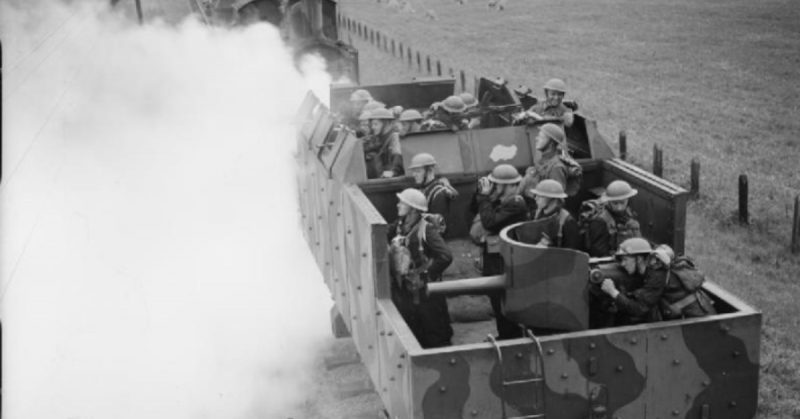First World War
During the First World War, Britain commissioned two armored trains.
The government was worried about the possibility of an invasion along the coastline. An armored train would give them a way of moving artillery and men to the site of the invasion as they prepared to mobilize more troops.
They also thought that this would provide reassurance for those living in the coastal areas who may have felt that their communities were particularly vulnerable as the war progressed.
Armored trains had been in operation since the American Civil War. They were also used in the Franco Prussian War as well as the Boer War and remained in use into the 20th century.
But in the 19th century, the train was still a relatively new technology which had transformed public travel. So, it was not surprising that this new technology would be applied to the military.
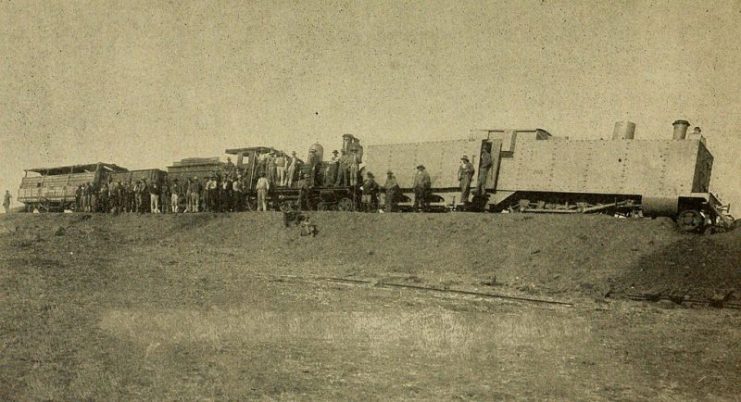
The task of kitting out the trains was a major undertaking but also a truly cooperative effort. Various parts of the process were undertaken by the different railway companies who were operating in the UK.
The engines were supplied by the Great Northern Railway. The type of engine chosen was a 0-6-2 tank engine. Each engine required two 30-ton boiler trolleys, and these came from the Caledonian Railway. The Great Western Railway supplied two 40-ton coal wagons.
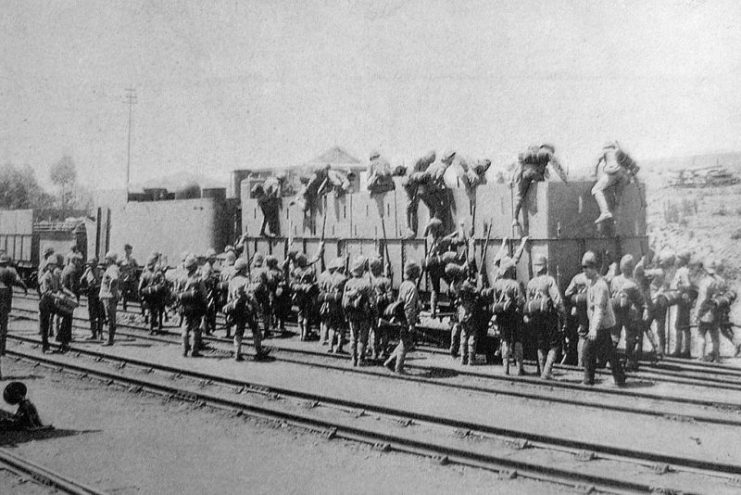
Once these were in place, the whole thing was sent to Crewe where the task of providing its armor was completed by the London and North Eastern Railways (LNER). Once the parts of the train had been brought together, the necessary weaponry and other equipment had to be added.
The main defense was a 12-pound gun with a shield which was set on a pedestal fitted to the boiler trolley. It was attached between the bogie wheels for extra stability. This meant the recoil effect when the gun was fired would not cause problems as the pressure from the impact would be distributed across the two axels.
Behind the gun there was a small cabin where the officer commanding the train would be based. This cabin also held ammunition.
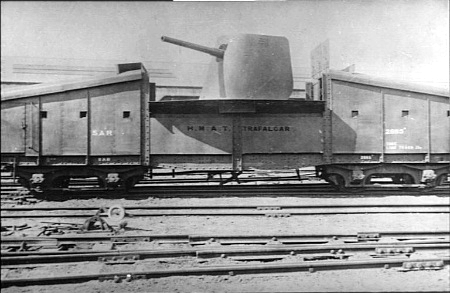
Each of the coal wagons had a bunker that contained one ton of coal which would be required to power the train. But the main use for the coal wagon was to provide accommodation for the soldiers.
The wagons were kitted with folding tables, ammunition lockers, and other essentials including tanks for drinking water. There would also have been a cooking stove. Each of the wagons was divided up to provide separate accommodation areas for the officers and the rest of the soldiers.
Supplies of water for the train were stored in four tanks beneath the frame, each holding 200 gallons. The whole thing was then covered with ½” armor plate. This was dotted with loopholes to allow for rifle fire when the train went into action.
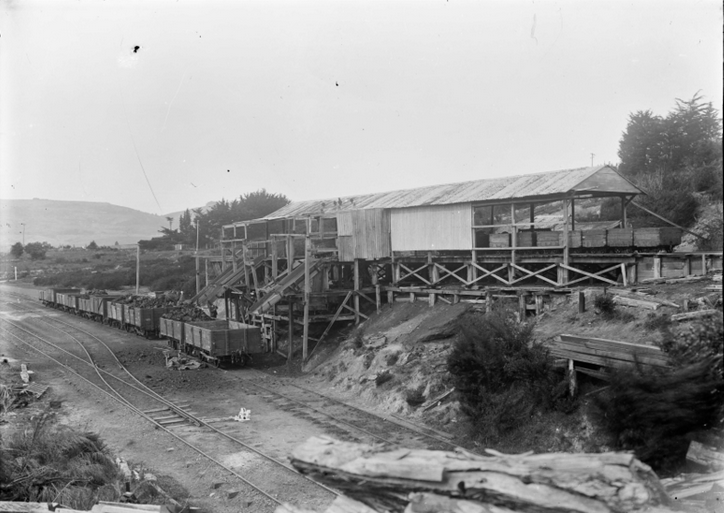
A train called Alice
The trains followed the shipping tradition of being given names. Number one was HMT Norna. Once complete, it was stationed at Edinburgh, Scotland to provide protection for the north.
Train number two was named HMT Alice and was based at Norfolk to provide protection along the East coast of England.
The method of driving the train was designed to ensure that the driver would always have a clear view of the signals and any other trains on the line ahead regardless of which direction they were traveling. Instead of being operated from the footplate as is usually the case, it could be driven from either end of the train.
There was also a special phone link for communication between the fireman and the driver.
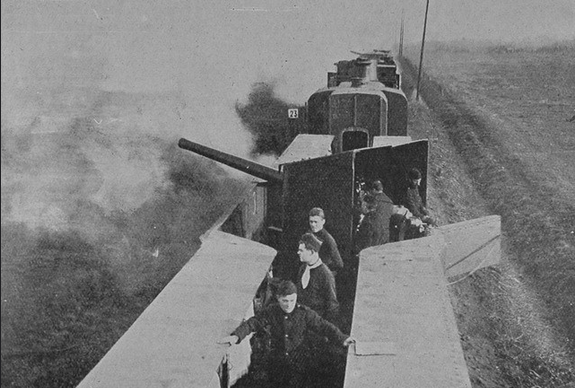
After the War
As it happened, the trains were never called into action. In 1919, both trains were taken to Catterick in North Yorkshire, and soon afterward they were transferred to Longmoor Military Railway, where they were expected to be broken up.
However, they were not broken up because, in 1923, they were brought back into civilian service by the LNER who had been responsible for kitting them out for their military duties.
The LNER put them into service as general goods vehicles. Later, they were also employed experimentally in the 1930s when the wagons were used as part of a machine to lay track end to end.
In 1956, the two locomotives had reached the end of their useful lives and were eventually scrapped.

Second World War
Although the trains never had to be called into action during the First World War, this was purely due to circumstances rather than anything to do with the effectiveness of the trains.
When the Second World War broke out, the British government still saw the potential of having such vehicles available as a quick response to the threat of a possible invasion. This time, Britain commissioned the conversion of 13 locomotives into armored trains.
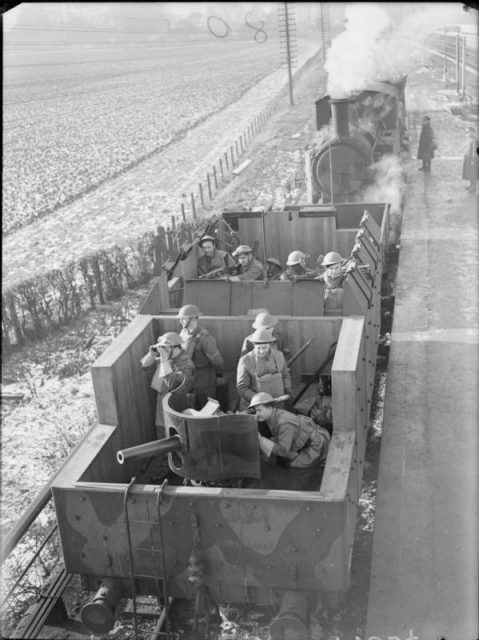
In the beginning, the fleet of trains was operated jointly by the Royal Engineers and the Royal Armored Corps. Later, they were manned by the Polish Armed Forces and Home Guard, many of whom were railway employees.
In addition to these, there was also a narrow-gauge armored train which was manned by the 6th Battalion, Somerset Light Infantry.
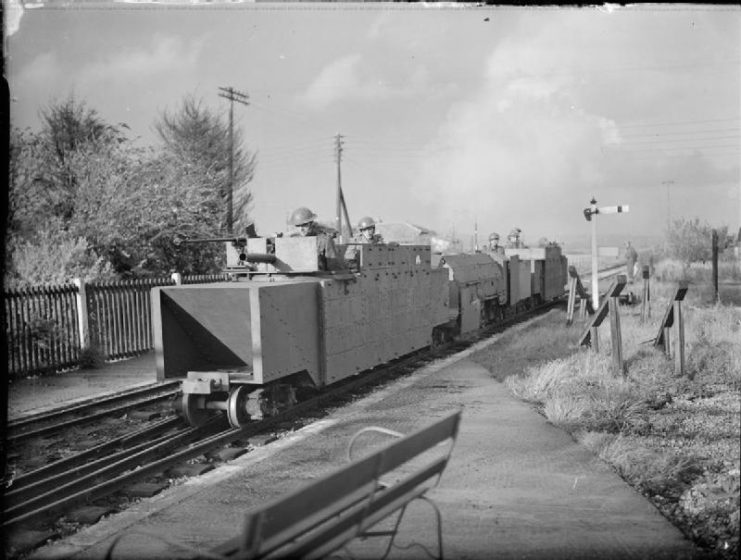
Although this train was too small to carry heavy artillery such as the Hotchkiss guns which would be found on other armored trains, it could carry lighter weapons and was equipped with an assortment of lighter machine guns. Although small, the train proved to be useful, and the crew shot down several German planes.
Britain also provided an armored train to protect royalty while traveling. In 1941, the London Midland and Scottish Railway (LMS) built two armored saloons for the royal train for King George and Queen Elizabeth.
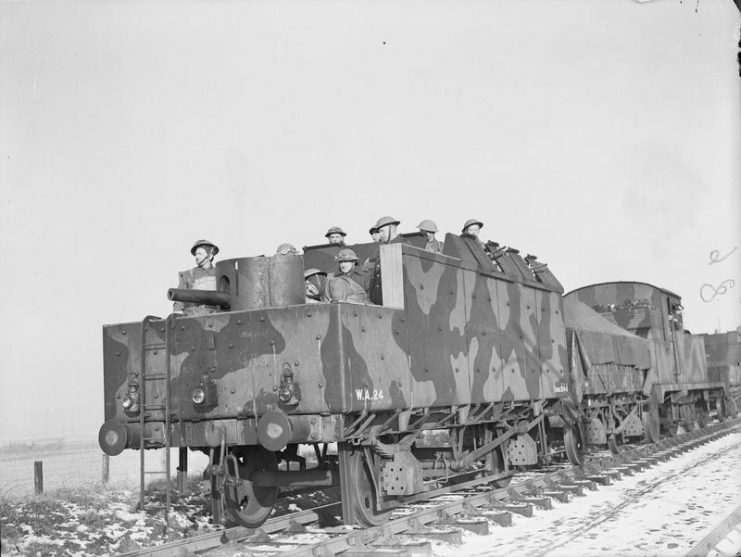
Read another story from us: Recovery on Rails: Ambulance Trains of World War One
End of the Line
Although more armored trains were built and deployed in many countries and conflicts, their use declined during the 20th century. Not only were tracks seen as an easy target for bombing or sabotage, they were also overtaken by new developments in road transportation which offered greater speed and flexibility.
